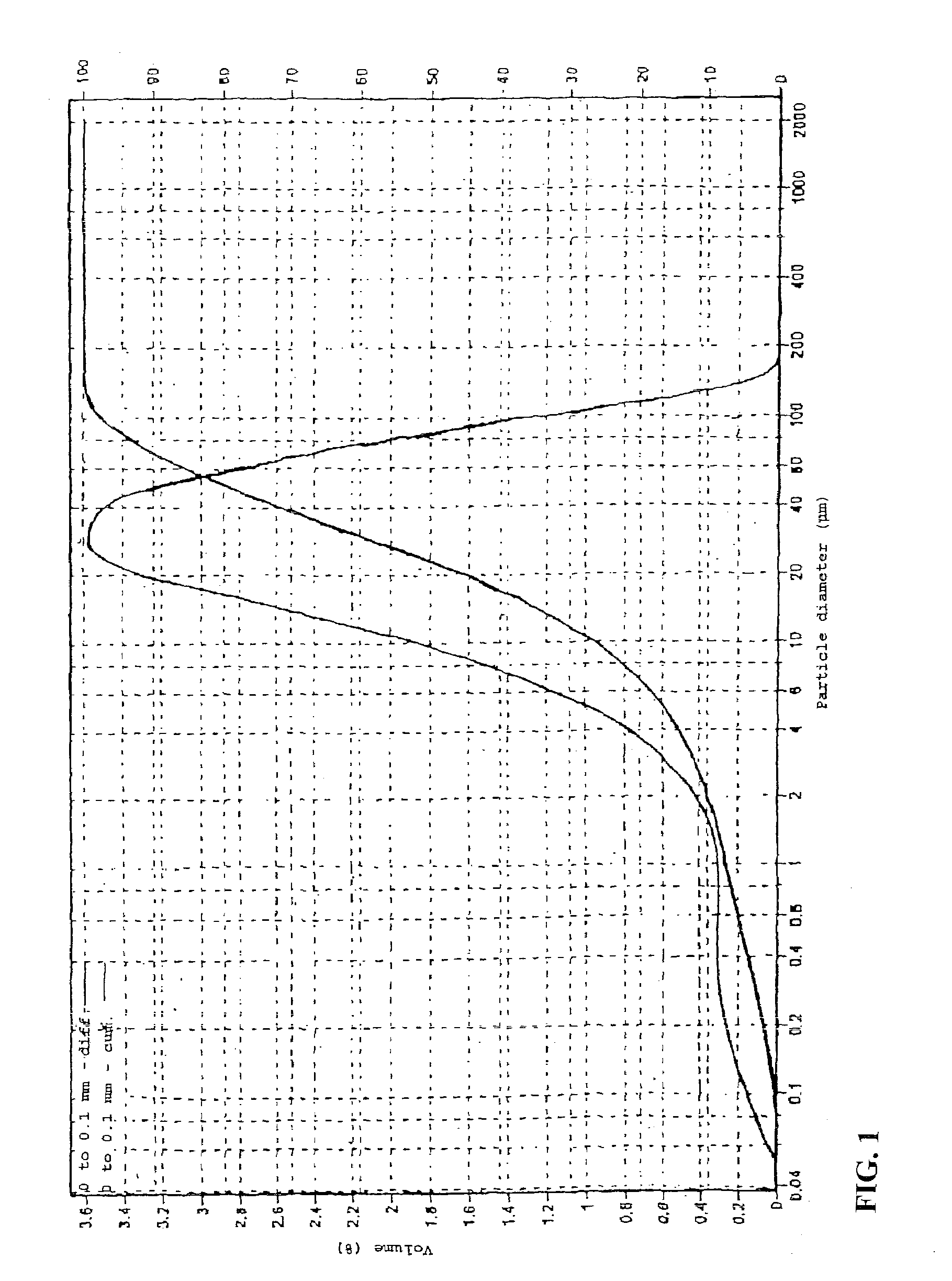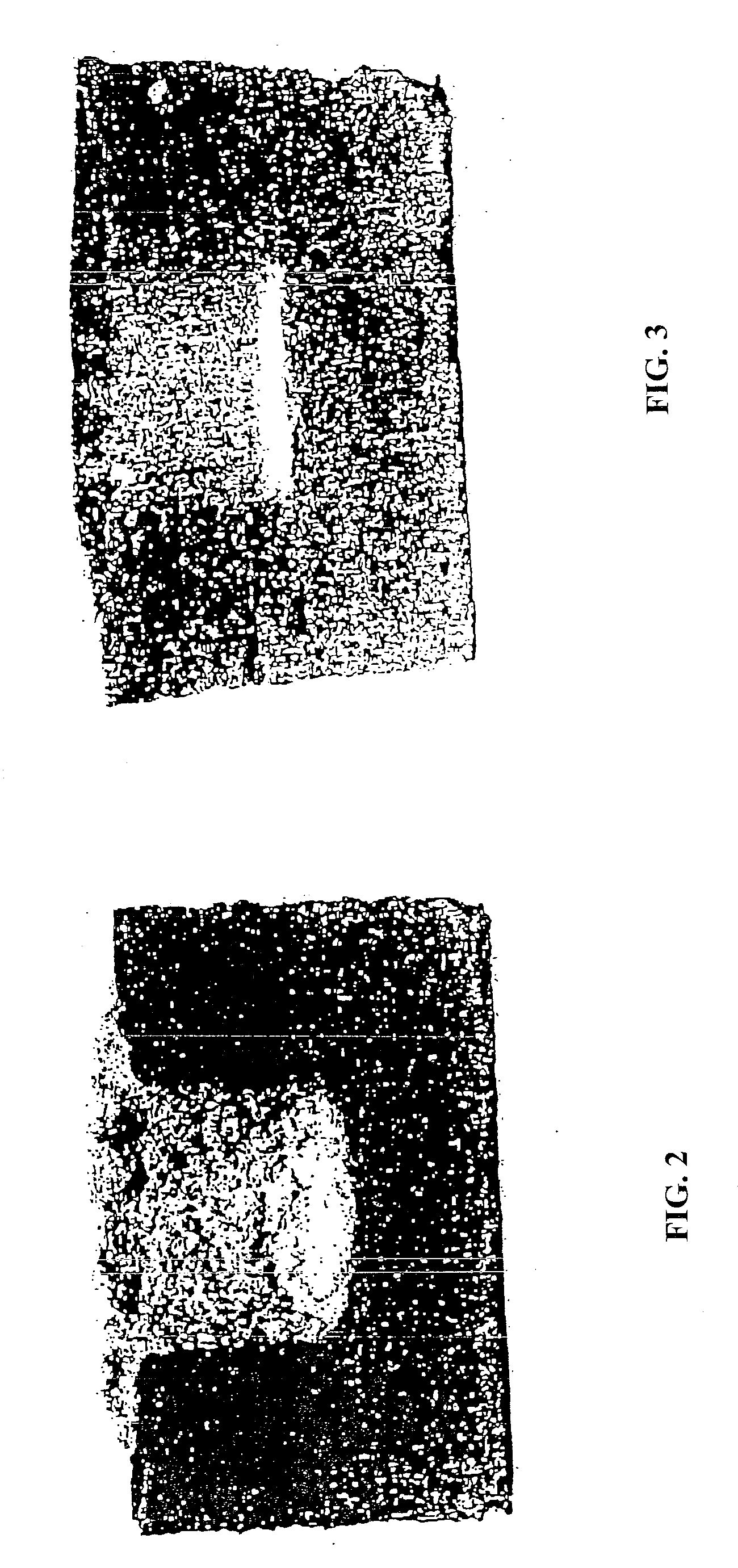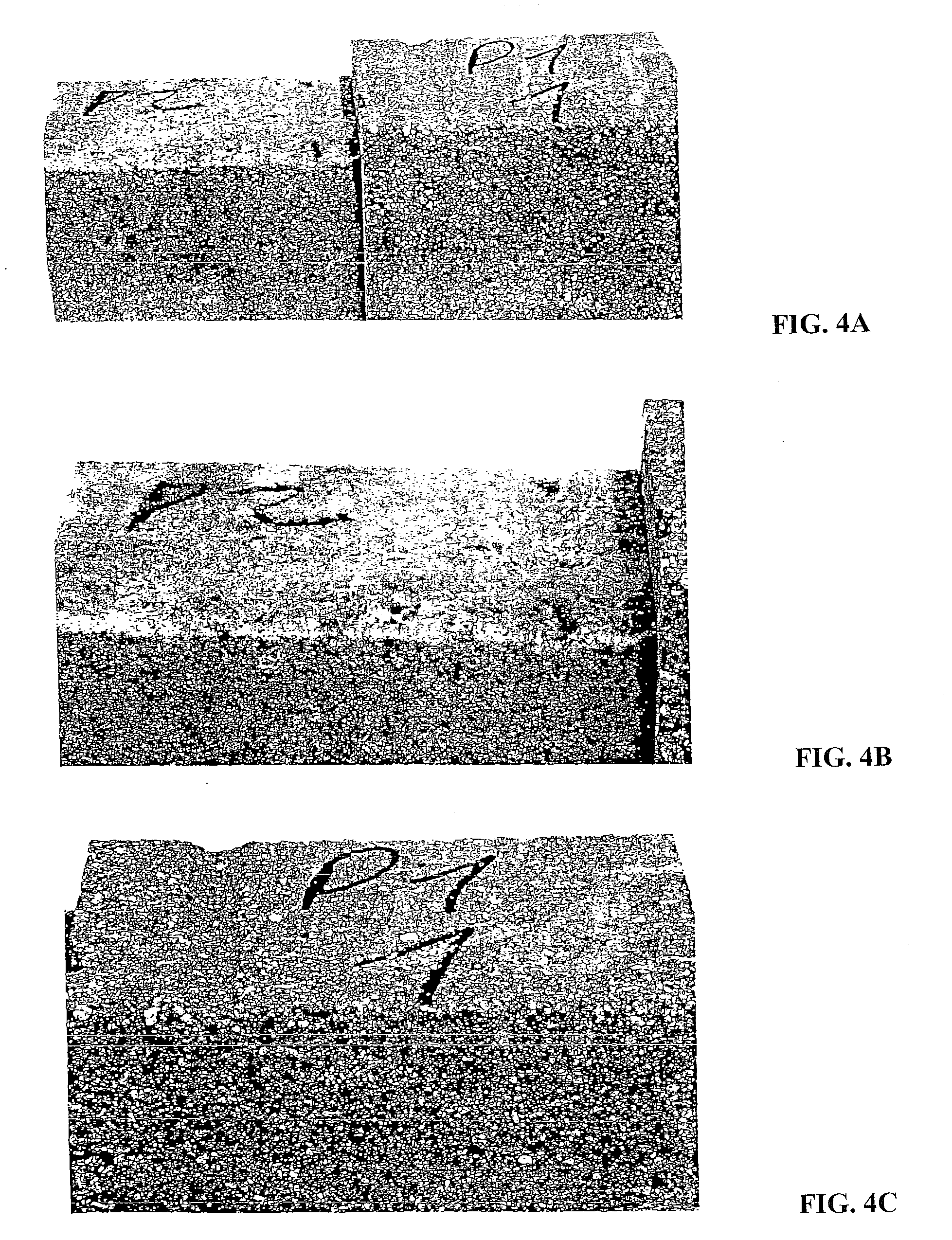Refractory shaped body with increased alkali resistance
a refractory and alkali resistance technology, applied in the field of refractory batches, can solve the problems of high chemically corrosive load on the refractory material used for lining the kiln and furnace vessel and chamber, high chemically corrosive wear caused by volatile substances, and rise in the temperature of the kiln or the refractory lining of the kiln section in which the temperature is between 700 and 1300° c.,
- Summary
- Abstract
- Description
- Claims
- Application Information
AI Technical Summary
Benefits of technology
Problems solved by technology
Method used
Image
Examples
example 1
[0029]High-alumina shaped bodies containing approx. 60̂ by weight of Al2O3 were prepared to form refractory shaped bodies to investigate their burning behavior. #2 refractory body according the U.S. Pat. No. 5,338,711 consists of bauxite and fireclay which are adjusted to get an Al2O3-content in the fired body of 60% by weight by using a weight ratio of 1.1875. This body consists further of SiC-powder of 5% by weight, a boron phosphate addition of 4% by weight, and a phosphorous containing binder in an amount of 9.2% by weight.
[0030]#1 refractory body containing bauxite and fireclay which are adjusted to get an Al2O3-content in the fired body of 60% by weight by using a weight ratio of 1.1875. This body consists furthermore of SiC-powder of 5% by weight, and a phosphorous containing binder in an amount of 9.2% by weight.
[0031]These mixtures were pressed under a pressure of 80 MPa. Then, the shaped bodies were dried at a temperature of 150° C., and after drying the shaped bodies were...
example 2
[0039]High-alumina raw materials containing 51% by weight of Al2O3 or 71% by weight of Al2O3 were used to form refractory shaped bodies with different compositions. The maximum grain size was 4 mm. The grain size distribution corresponds to a typical fuller curve. These high alumina raw materials were mixed with 5% of a refractory bonding clay. The mixture also included 5% of SiC with the grain size from 0 to 0.9 mm. There were two refractory batches produced with a high-alumina raw material containing 51% by weight of Al2O3 and two refractory batches with 71% by weight of Al2O3. These four mixtures were mixed with a binder component, whereby the two refractory batches with 71% by weight of Al2O3 either contained 1.6% phosphoric acid and 1.2% water of 4% lignin sulfonate. The same components were mixed to the two refractory batches with 71% by weight of Al2O3. These four mixtures were pressed under a pressure of 90 MPa. Then, the shaped bodies were dried at a temperature of over 100...
example 3
[0042]Crucibles were cut out of the four shaped bodies of Example 2 with an edge length of 70 mm and an internal bow with a diameter of 40 mm. To simulate alkali attack, these crucibles were filled with 70 g of potassium carbonate. The crucibles were then closed off with a cover made from the same material and were treated in a kiln for five hours at a temperature of 1100° C.
[0043]The results are shown in FIGS. 6A, 6B, 6C and 6D. The result after firing is that the microstructures of the comparative examples shown in FIGS. 6A, 6B and 6C reveal infiltration. The shaped bodies were considerably destroyed by the alkali attack.
[0044]By contrast, the brick of the present invention shown in FIG. 6D does not reveal any effect on the microstructure by the alkali attack. The shaped body is free of cracks. The alkali resistance of the shaped body according to the invention is, surprisingly, so high that potassium carbonate has boiled over out of the crucible, since it was unable to penetrate ...
PUM
| Property | Measurement | Unit |
|---|---|---|
| Grain size | aaaaa | aaaaa |
| Temperature | aaaaa | aaaaa |
| Temperature | aaaaa | aaaaa |
Abstract
Description
Claims
Application Information
 Login to View More
Login to View More - R&D
- Intellectual Property
- Life Sciences
- Materials
- Tech Scout
- Unparalleled Data Quality
- Higher Quality Content
- 60% Fewer Hallucinations
Browse by: Latest US Patents, China's latest patents, Technical Efficacy Thesaurus, Application Domain, Technology Topic, Popular Technical Reports.
© 2025 PatSnap. All rights reserved.Legal|Privacy policy|Modern Slavery Act Transparency Statement|Sitemap|About US| Contact US: help@patsnap.com



